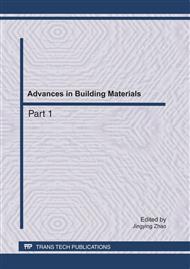p.1167
p.1172
p.1178
p.1182
p.1191
p.1196
p.1201
p.1206
p.1210
Restoration of Tunneling Failure in Kaohsiung MRT Project
Abstract:
According to past experiences, the collapse of tunneling work always triggered a chain reaction of collateral damage and caused a considerable urban impact. Therefore, while the tunnel disasters occur, the timely response is important to prevent the expansion of the disaster and the subsequent restoration work is equally important to shorten the impact duration and ensure the ultimate success of the project. This study used the restoration works of a tunneling failure that occurred in Kaohsiung MRT project as a research subject to identify those works, which are critical to the success in the process of the restoration. The research results suggest that an accurate site investigation, and a thorough analysis of possible alternatives and the selection of restoration methods with comprehensive consideration of various factors are the critical factors for the success of the restoration works.
Info:
Periodical:
Pages:
1191-1195
Citation:
Online since:
May 2011
Authors:
Keywords:
Price:
Сopyright:
© 2011 Trans Tech Publications Ltd. All Rights Reserved
Share:
Citation:


